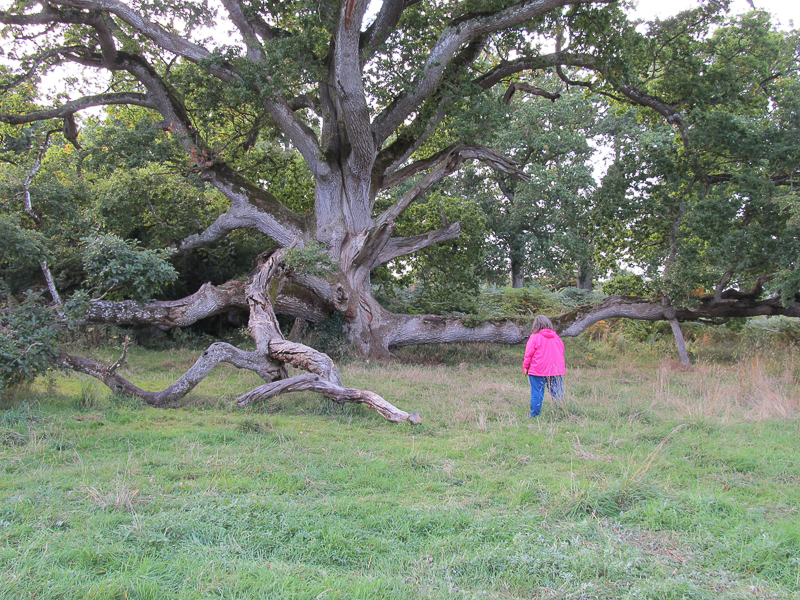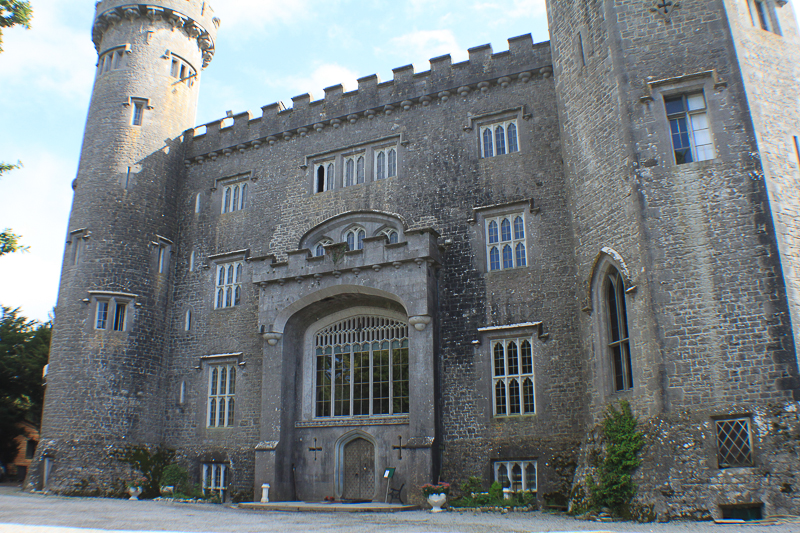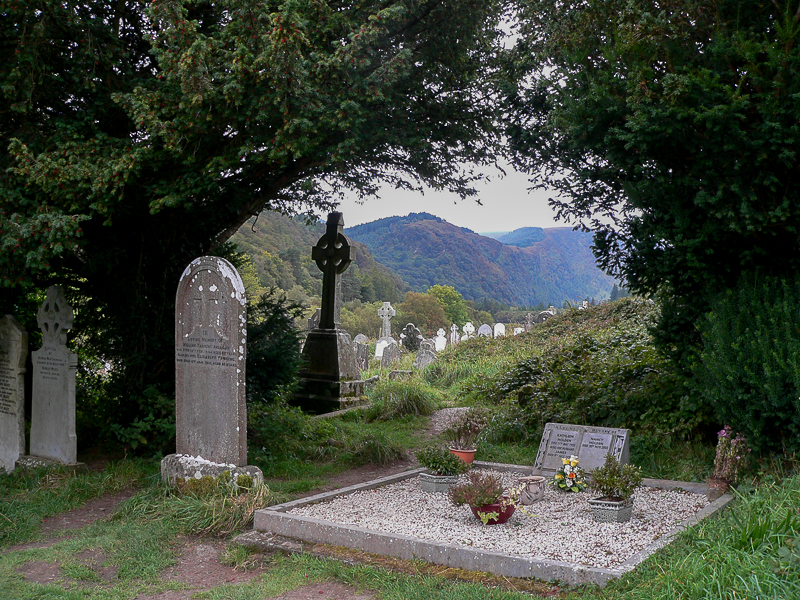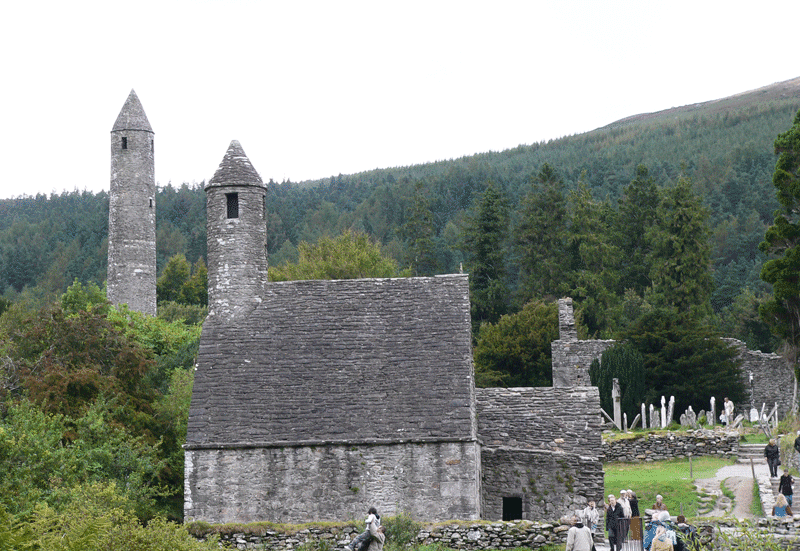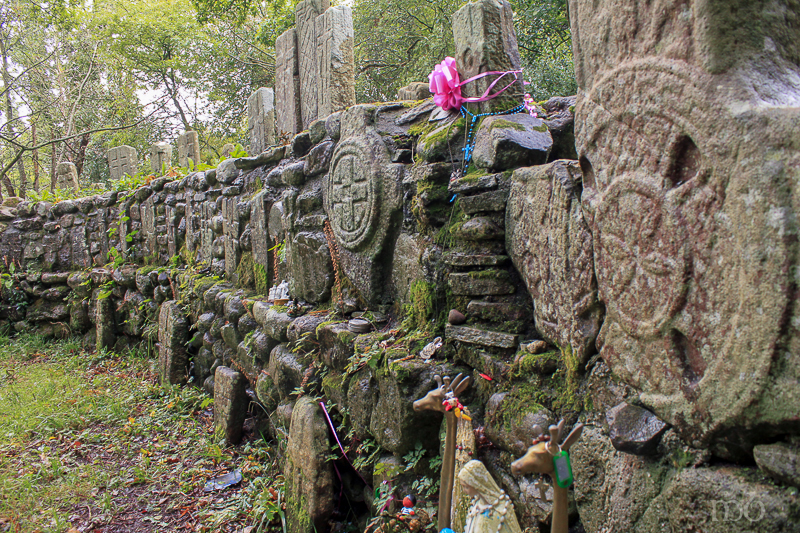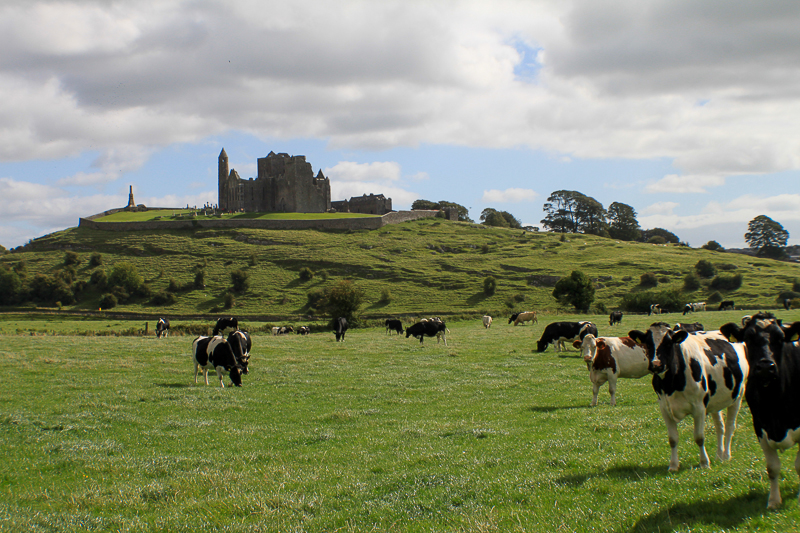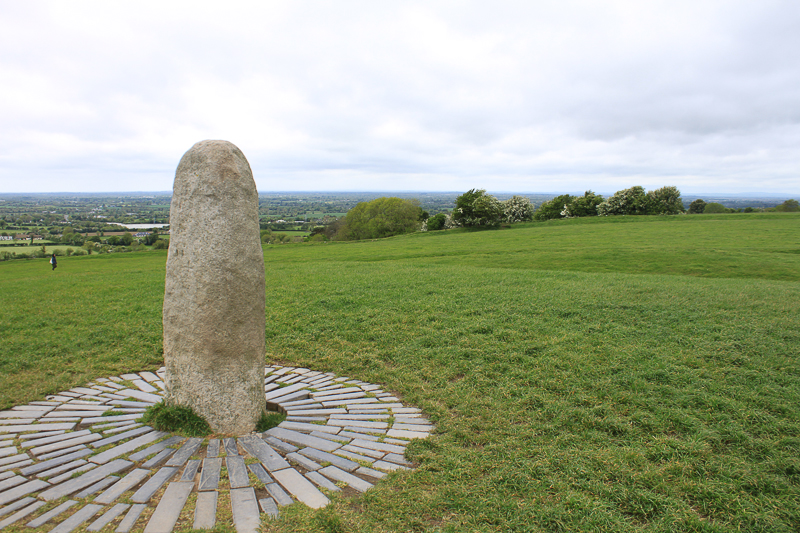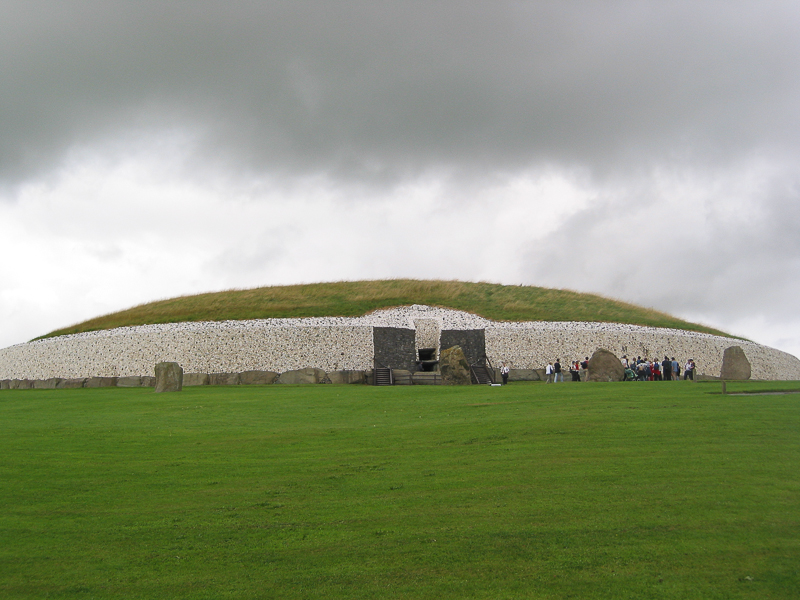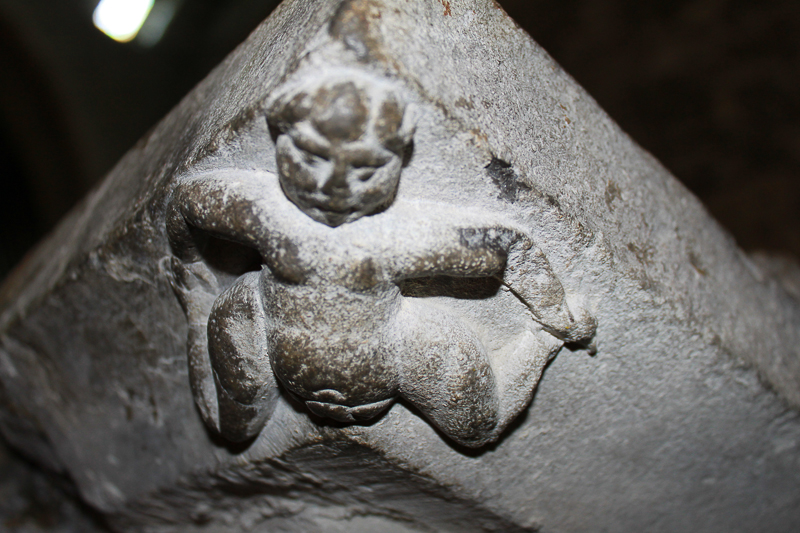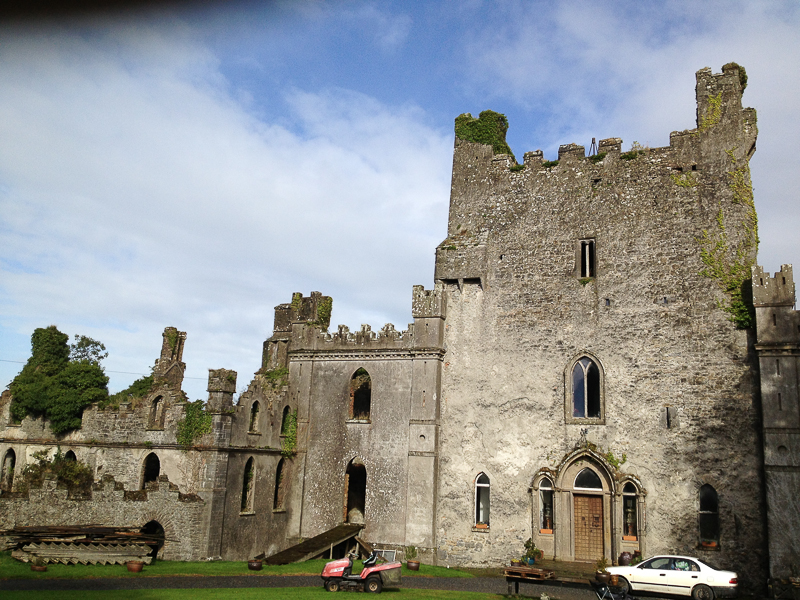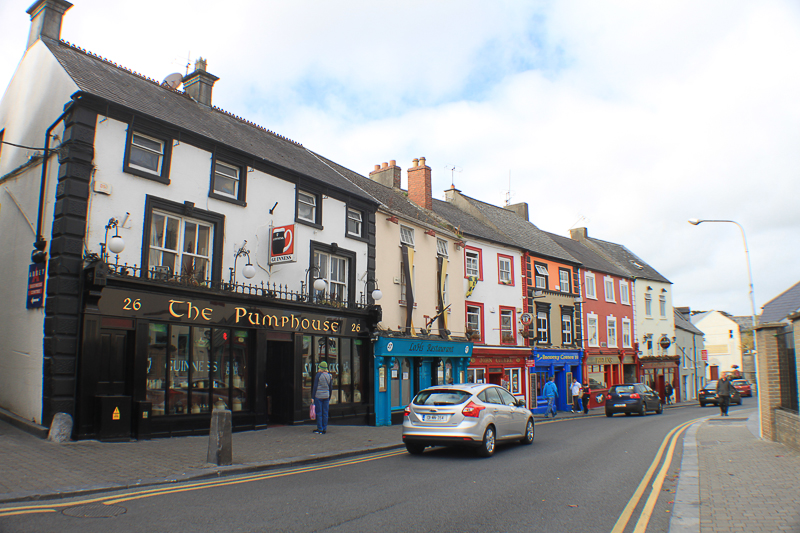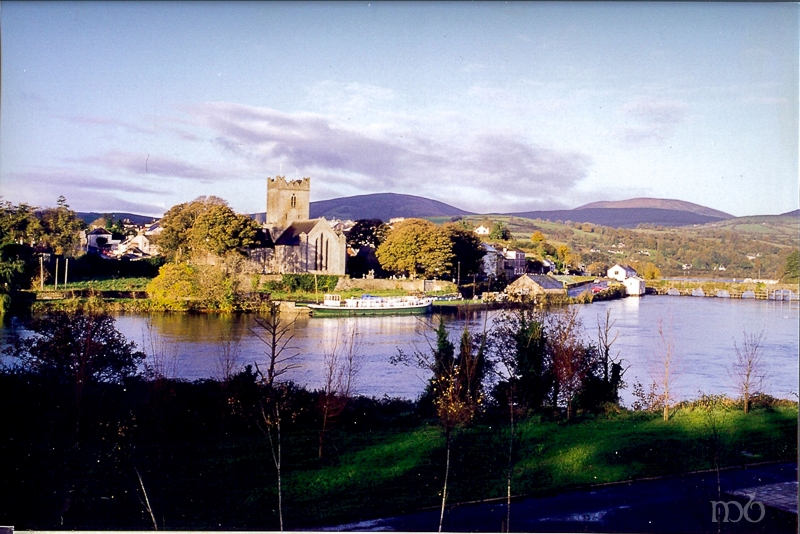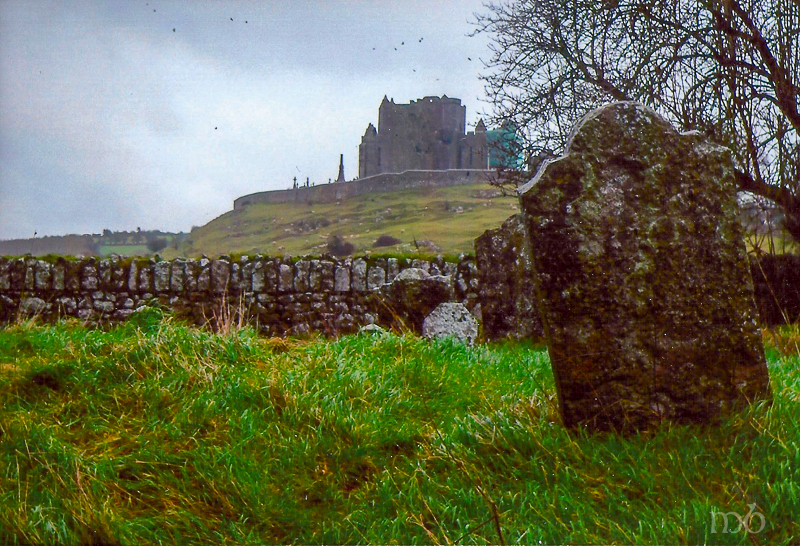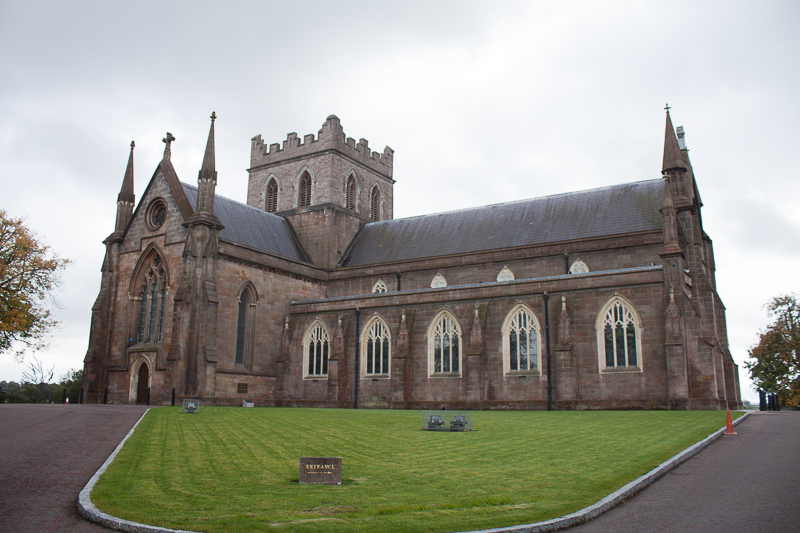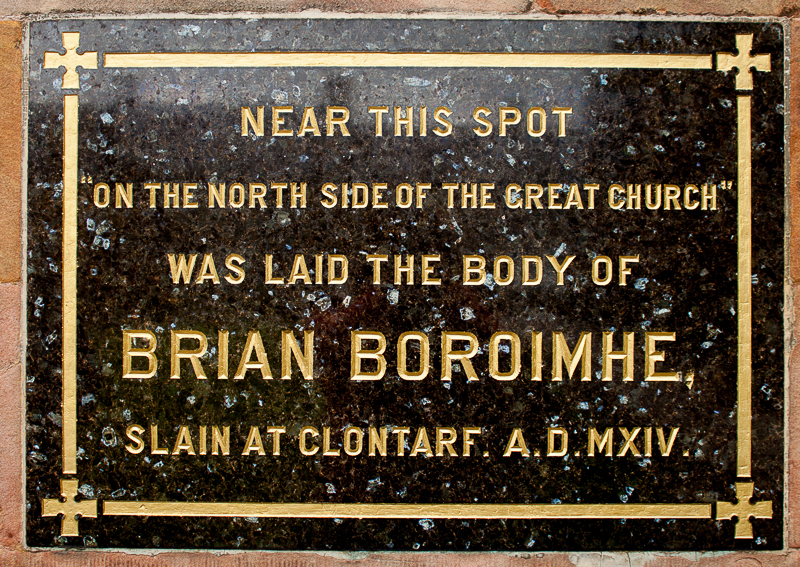12 Pictures that Will Make You Want to Tour Ireland
Ireland and its thin places have such a draw for those interested in traveling a bit deeper into the landscape. Here are 12 pictures that show some of these amazing places. All of them are on our Castles, Saints & Druids Thin Places tour this September 2014. Join us!
1. The King Oak
The King Oak is said to be between 500-800 years old. It’s part of an ancient oak forest once sacred to the Druids, then later the site of a monastic community. The forest entombs Charleville Castle, a gothic-style castle built from 1798-1812. The King Oak ranked #3 in Europe’s Tree of the Year 2013 and it’s a familiar old spot to the people around Tullamore. Many a romance started and ended beneath the branches of this tree. The spread of the lower branches spread out over 150 feet from end to end. This oak is set in an ancient grove with other trees that are hundreds of years old. When the British invaded Ireland and occupied the country, they ravaged the land, stripping it of all its forests, then exported the wood for profit. Fortunately this oak forest was part of a 1700 acre “gift” from Queen Elizabeth I to the Moore family. The gentry tended to keep the trees on land around their homes. This oak forest has been considered magical for centuries.
2. Charleville Castle
Charleville Castle was built by the Earl of Charleville between 1798 and 1812 in an ancient oak forest near Tullamore. The site was formerly occupied by the Lynally monastic community, and before that was used by the druids for sacred rituals and ceremonies. It is currently owned by a non-profit that uses volunteers from all over the world to help restore the castle and bring it into a self-sustaining existence. The caretaker says that the designers of the castle were Masons and positioned the round towers on crossed ley lines which creates a powerful energy field in the tower rooms. The caretaker also has experienced ghostly sitings that include druids, the Earls of Charleville and the castle designer. Many believe that a little girl named Harriet who was the daughter of the third Earl of Charleville haunts the back staircase where she fell to her death after trying to slide down the bannister. Charleville Castle and its surrounding oak forest is considered one of the scariest places in Ireland.
3. Castleruddery Druid Stone Circle
Castleruddery Stone Circle in County Wicklow is a Bronze Age Druidical circle once used for ritual. There are a total of about 40 stones on the site but the circle itself has about 20 standing stones places on a raised embankment. This would have been a place of great importance based on the geographic layout of the stones, embankment and ditch that is dug outside the embankment. Two large quartz stones mark the portal (entrance) of this circle. Quartz in an amplifier of energy and believed to have healing properties. Some locals from this area believe this stone circle has healing properties. There is also a fairy tree in the circle (pictured here). The roots are wound around a standing stone. Some of the stones have cup marks carved into them and notches carved across.
4. Glendalough
Set in the Wicklow Mountains, Glendalough (meaning valley between two lakes) features the ruins a Medieval monastic city founded by St. Kevin in the 6th century. In the last two centuries it’s been used as a graveyard for local families, but the old bones of the monastic city can still be seen in the hilly landscape. ruins of churches, round-towers, buildings dating from the 9th to 13th century make this site absolutely enchanting. The views of the glen and lakes and babbling stream connecting the lakes are also remarkable. Our Castles, Saints and Druids tour group will be overnighting in the Glendalough Hotel in September.
5. St. Kevin’s Kitchen – Glendalough
St. Kevin’s Kitchen is a 12th century church in Glendalough, and often used as a defining landmark for the ancient monastic city. The church has a stone roof with a round tower built into the roof. Round towers were used for bells, for look-out stations to see people approaching from a distance.
6. St. Berrihert’s Kyle – Glen of Aherlow
St. Berrihert’s Kyle is a round structure built by the local people from pieces of an old monastic ruin. It was made to mark a Cillini or burial ground for unbaptized babies and others not qualified for sanctified ground. The kyle is a complete circle set in an oak grove in the Glen of Aherlow in County Tipperary. Pilgrims travel from all over to pray here. They leave behind devotional tokens – some very rare. These tokens are offerings left in hopes that their prayers will be answered. There is also a holy well (more like a small pond) nearby that is flanked fairy trees covered in clooties, also left by pilgrims.
7. The Rock of Cashel
If the Rock of Cashel doesn’t inspire you, nothing will. This cluster of ruins atop a rocky hill in County Tipperary can be seen for miles. It always reminds me of Emerald City in the Wizard of Oz. The Rock is set in the middle of agricultural land known as the “Golden Veil” because of the bounty of food it produces, and that land is ringed by mountains. The views from the Rock are stunning, and the energy and power of the site radiates in almost fearsome abundance. This is a must-see site in Ireland.
8. The Hill of Tara
This is the Lia Fáil or Stone of Destiny perched atop the Hill of Tara – a corronation site once used for crowning the High Kings of Ireland. An old legend states that if the true High King was crowned, the Lia Fáil would literally cry out or roar. If this stone looks phallic to you, that’s because it’s meant to look that way. The ancient pagans didn’t have the sexual hang-ups of our present world. They believed that male and female were two aspects of the Divine. In this case the stone may represent the male Divine aspect in union with the female aspect (the earth). The stone is believed to have magical properties – those properties were demonstrated the roar of the stone during coronations. The Hill of Tara has a brilliant earth energy.
9. Newgrange Passage Tomb
Newgrange, the Boyne Valley is Ireland’s oldest building remaining fully intact. The tomb dates back 5000 years, predating the pyramids of Egypt, Stonehenge and all the other tombs and prehistoric enclosed structures in Ireland and Britain. Newgrange was a center for spiritual ritual and has remained intact since the Stone Age. The inside is large with a center chamber large enough for 20 people to stand and three side chambers. The entrance is shown in this image (center). Above the opening the tomb is a stone lintel which allows the passage of light to penetrate the pitch blackness of the tomb during the sunrise on the Winter Solstice (December 21) – the shortest day of the year. Visitors to Newgrange can walk deep into the passage tomb and a guide uses an electric light-beam to demonstrate the shift from dark to light during the Solstice sunrise.
10. Sheela-na-Gig – Kildare
There are people who search for Sheela-na-gig’s all over Ireland and in other Celtic countries. These figures are usually primitive carvings in stone that depict a female revealing her genitals with legs spread wide open … usually with some kind of angry face. Some say the Sheelas were fertility goddesses, others believe they a defense against evil or bad energy similar to the function of a gargoyle. They are often found over doorways or beside entryways in churches and castles. Ireland has the most known Sheelas of any country (101). This Sheela-na-gig is hidden under the altar at St. Brigid’s Cathedral in Kildare. As our Thin Places tour group wandered through this beautiful and ancient cathedral, one of the cathedral staff people pointed this out to me. It was tough getting a picture (had to practically lay on the floor), but it was well worth it.
11. Leap Castle
Leap Castle is still being restored by its owner, musician Seán Ryan and his wife. The castle located in County Offaly was built by the O’Bannon clan in the 13th century, and later came under the ownership of the O’Carroll clan. It is said to have been built on a former ceremonial site used by the druids, and archaeologists estimate there has been human habitation on the site since the Iron Age (500 BC). Leap is famous for being haunted, probably because of the violence that has occurred there. The O’Carroll clan, warring over leadership resolved the conflict when one brother (a priest) was saying mass for his gathered family members in the chapel on the upper floor of the tower. Another brother burst through the door and murdered the priest with his sword in front of the family. Thereafter the upper floor of the tower was known as “the Bloody Chapel.” Leap also has an “elemental” or non-human spirit that has been seen as a shadowy figure that makes mischief.
12. Kilkenny – Downtown
While we all love thin places and mystical landscapes, no travel to Ireland is complete until the visitor gets to experience the Irish culture, and Kilkenny is certainly a vibrant town of culture. The name Kilkenny originates from the Irish words that mean Church of Canice and St. Canice’s Cathedral and round tower sitting atop a hill anchors one end of the city while Kilkenny Castle anchors the other. In between are shops, galleries, pubs and heritage sites. This was once a hub for monastic communities. The Grey Friars were here as were the Franciscans – St. Francis Abbey is now home Ireland’s oldest operating brewery which makes Smithwicks and Kilkenny beer. Walking the Kilkenny’s downtown is an excellent way to engage in conversation with the Irish, and the most memorable thing you’ll do on a trip to Ireland is engage with the Irish people.
All of the pictures above and the sites mentioned are part of our Castles, Saints and Druids tour for 2014. It runs from September 11 – 21st. It is a small, specialized tour focused on mystical sites ranging from the ancient druids to the monastic communities through the times of the British occupation. The cost is $2099 per person + airfare. For more details check out the Tour Itinerary.
In the Irish Game of Thrones – Brian Boru Won
The story of Brian Boru, High King of Ireland, plays out like the popular HBO television series Game of Thrones. In the late tenth century, Ireland had about 500,000 inhabitants and 150 kings. It was an old land – a land of tribes and chieftains constantly battling for power and control. No man, woman or child was spared the gruesome, bloody scenes that come with constant war.
Brian Boru was one of eleven sons born to a chieftain who ruled over Thomond, a region covering most of north Munster. He died when Brian was just ten years old. They lived in County Clare in an area now known as Killaloe, a small village on the River Shannon. Being the son of chieftain, Brian was trained as a warrior and he saw more than his share of violence, torture, injury and death. When the local clans weren’t warring, the Vikings were invading. Though Brian grew up to become a great warrior and leader, he also developed superb political skills. These skills paired with his love for Ireland pushed him to become the most successful leader of his time.
At an early age, Brian was ruling Thomond. By the time he was 35 he had ascended to the royal seat of Munster, Ireland’s southwestern province. The High Kings of Munster ruled from the Rock of Cashel , but some historians believe that Brian chose to rule from Kincora, his estate in Killaloe. Brian fathered many sons with several wives, one of whom was a Viking. But as much he traveled throughout Ireland battling and politicking, his home base was always at Kincora. Today, the ramparts of his castle there are still visible in a wooded area off an unmarked path in Killaloe.
Brian Boru Becomes High King in 1002
As in the Game of Thrones where rulers of the seven kingdoms seek the Iron Throne, Brian Boru sought the position of High King. He achieved it when he was 61 years old. Ireland has had many High Kings, but Brian was the only High King who united the entire country for one common cause – to defeat the Norse invaders.
On Good Friday, April 23, 1014, Brian Boru and his sons led an army in a battle at Clontarf near Dublin. There was great loss of life including Brian’s son and grandson, but the 73 year old High King survived. His army defeated the Vikings, driving them into the sea back to their Nordic homelands.
While Brian had a few domestic enemies who ultimately joined the Vikings in battle against him, the Irish masses were behind the High King. And it was this unified spirit that enabled Brian Boru to lead the effort that expelled the Vikings for good. His political savvy, warrior strength and unrelenting determination brought Ireland to a place where the people were united, liberated and poised to grow as a nation.
Brian Boru was undoubtedly the most successful king in Ireland’s history.
Brian Boru and Sons are Buried at Armagh Cathedral
When the Battle of Clontarf was over and the Norse were driven out into the sea, Brian Boru’s army collected its dead and tended to its wounded while the High King returned to his tent alone, to rest. At some time during the night several fleeing Norseman came upon Brian’s tent and found him alone and vulnerable. They assassinated him.
Brian Boru’s warriors carried his body from Clontarf all the way to Armagh, the Christian capital of Ireland. The High King was buried on the grounds of St. Patrick’s church with the bodies of his son and grandson who had died in the battle. Today St. Patrick’s Cathedral stands where the old church stood. On its outside wall, a marble engraved sign reminds Cathedral visitors that Brian Boru was was laid to rest on the north side of the great church.
Today – April 23rd marks the 999th anniversary of the Battle of Clontarf and Brian Boru’s death.
902 Years and a Day Later
Sadly, after Brian died the country fell back into anarchy with warring tribes and clans vying for power. That unity under Brian Boru was never achieved again by the Irish people – not until 902 years and 1 day later when on Easter Monday, April 24, 1916 the Irish started a unified rebellion that eventually won 26 of Ireland’s 32 counties independence from Great Britain.
*
NOTE: The story of Brian Boru is beautifully told in The Lion of Ireland by Morgan Llywellyn. I highly recommend reading it before taking a trip to Ireland. It has so much history in it. When you visit knowing that history the landscape comes alive.
The Rock of Cashel – St. Patrick’s Rock
The Rock of Cashel Rises from the Golden Vale
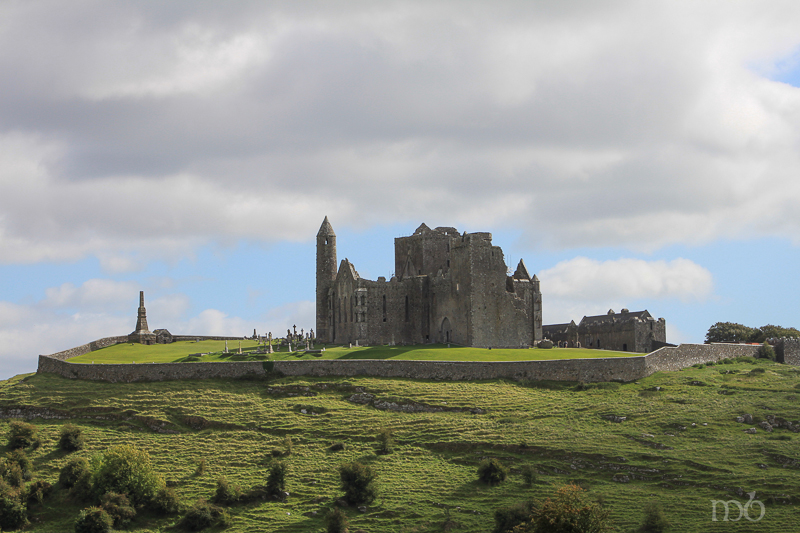
The Pre-Christian and Celtic people of Ireland, Scotland, Wales and England had a keen sense for thin places. The landscape in these countries is littered with man-made markings and ruins that remind the passer-by that this is holy ground. The rocks, trees and landscape hold the memories of spiritual exercises here long ago and present.
Cashel is a thin place.
The very ground itself seems to call out, “Come here and be transformed.” In a quiet moment, the pilgrim today can sense a connection with the souls that have marked these spots with their spirits. Cashel is a vivid reminder that we are all joined inside and outside of time.
The Tipperary Plain also known as the Golden Vale, spreads like a quilt of green and gold velvet patchwork, delineated by hedgerows, lines of trees and occasional roadway, and framed by distant Slieve Bloom Mountains. It’s called the Golden Vale because of the rich, fertile soil which brought prosperity to those who farmed it. Out of the center of the Vale, rising some 200 feet is the Rock of Cashel.
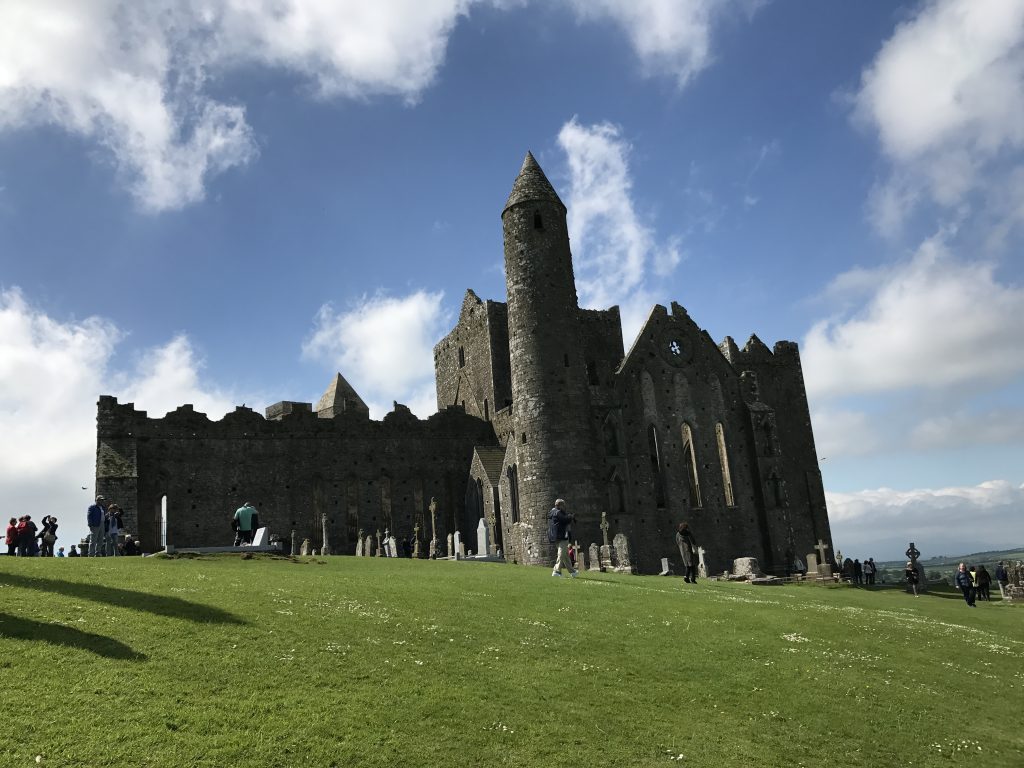
Crowned with the ruins of 11th and 12th century buildings, the Rock is woven into a series of legends, all associated with power and dominance that span nearly two thousand years. The Rock is also referred to as “the Devils Bit.” According to Irish legend, the devil was flying home (presumably to England) when in a fit of anger he bit off a piece of the Slieve Bloom Mountains and spewed it out into the middle of the Tipperary Plain, creating the Rock of Cashel. There is a unique “vacancy” in the hills around Cashel that looks decidedly like a bite. But the Slieve Bloom are comprised of sandstone and the Rock of Cashel of limestone, so the Devil’s Bit theory is unlikely.
St. Patrick’s Rock
Legend states that St. Patrick preached here in the fifth century. He came to convert King Aengus and baptized the King around 450 AD. Patrick later made Cashel a bishopric claiming it as a seat of power long before it was the seat of the high kings of all Ireland.
 In the twelfth century, a high cross, now known as “St. Patrick’s Cross,” was erected at Cashel to commemorate 800 years since St. Patrick’s visit. The original cross is quite weathered, but the image of the crucified Christ on the west face and the image of a man (possibly St. Patrick) on the east face can still be made out. The cross rests on a massive base repudiated to be the coronation stone of the Kings of Muenster. A replica of the cross and base greets visitors as they enter the enclosure on the Rock. The original cross and base are in the museum – also known as the Hall of Vicars, which also serves as the Visitor’s Center.
In the twelfth century, a high cross, now known as “St. Patrick’s Cross,” was erected at Cashel to commemorate 800 years since St. Patrick’s visit. The original cross is quite weathered, but the image of the crucified Christ on the west face and the image of a man (possibly St. Patrick) on the east face can still be made out. The cross rests on a massive base repudiated to be the coronation stone of the Kings of Muenster. A replica of the cross and base greets visitors as they enter the enclosure on the Rock. The original cross and base are in the museum – also known as the Hall of Vicars, which also serves as the Visitor’s Center.
The Rock, called Cashel of the Kings – Cashel is Irish for stronghold – dominates the surrounding landscape, its drama unparalleled in Ireland, and its history is every bit as dramatic. For one thousand years it was the seat of power for Irish kings and bishops, ruling the surrounding country, and for a time, the entire country. For 400 years it rivaled Tara as the seat of power for all of Ireland. The kings of Munster were crowned here and ruled from Cashel. In 978, Brian Boru declared himself High King of Ireland and was crown on the Rock of Cashel. He made Cashel his capital. Brian Boru was the first to unite all of Ireland with its centuries-long history of warring clans and tribes. He was also the last to unite all of Ireland, for since his death in 1014, no one person has unified the populations in all four provinces.
Boru’s descendants ruled from Cashel for one hundred years after his death when Murtagh O’Brien in 1101 gave the Rock of Cashel to the Catholic Church and it began to thrive as a Cathedral.
In 1647 the Earl Inchquin (under Cromwell’s influence) plundered the city. The townspeople fled to the Rock for safety and barricaded themselves in the Cathedral. Inchquin’s army piled turf around the cathedral and set it afire. All inside were burned to death. Over 800 people perished under that attack. The Rock was later abandoned, left to fall further into ruin. Finally, in 1874 it was declared a national monument and since then has been lovingly restored.
I will never forget the first time I saw the Rock of Cashel.
 At 10:00 a.m. we came down the Tipperary Road into Cashel. Seeing the Rock emerge from the landscape stirred childhood memories of seeing Emerald City rise up at the end of the yellow brick road in the Wizard of Oz. It was a moment when time stood still, burned in my memory like a trauma or birth.
At 10:00 a.m. we came down the Tipperary Road into Cashel. Seeing the Rock emerge from the landscape stirred childhood memories of seeing Emerald City rise up at the end of the yellow brick road in the Wizard of Oz. It was a moment when time stood still, burned in my memory like a trauma or birth.
That day we climbed the Rock of Cashel and wandered through the Cathedral ruins and cemetery. I knew nothing then about the history, who lived there, who ruled from there, what events took place there, but I knew it was a thin place. There was something exhilarating about Cashel, an excitement, a sense of power.
Cashel has long been linked with power. Warriors, chieftains, kings, princes, saints and bishops have all come here to mark the Rock as the seat of power, and blood has been spilled in that struggle for power. The Rock is not a peaceful place – as its legacy is riddled with memories of those who fought for power, stole power, ran to take refuge under the mantle of the powerful, and those who gloriously won the power.
The thinness is palpable. Your spirit is awake at Cashel.
I have returned to the Rock of Cashel with every visit to Ireland. I have seen the Rock lit up at night, covered in rain and mist, set against the frigid winter landscape and lingering through the long days of summer where the sun barely sets before rising again.
The Rock of Cashel, though in ruin, has a constancy; a historic brilliance that defies the modernization that grows around it with new homes, buildings and roadways. Cashel boldly claims her history, memories of kings, chieftains, warriors, bards, and holy men – thrusting them before us, urging us to enter in to her ancient legacy – and to return, and return and return.
So many people ask me, “What should I see on my visit to Ireland?”
I always say, “Don’t miss the Rock of Cashel.” Sadly, only a few heed my suggestion.
What a pity.
They’ll never know what I know… that Cashel will seduce you like a lover and cling to your spirit, planting some small charm that draws you back to her, creating a hunger for reunion. With each visit your are strengthened and sustained … until the next time. Cashel is like a first love. Though time, distance and life experience may stand between you – you never forget her, and you will return to her over and over in your imagination. You are changed forever for having known her.
